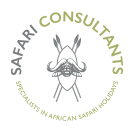There is just something about Africa that lures you in and once it gets hold it doesn’t let go. We have been yearning to get back to this incredible continent and the past couple of years have been tough.
With travel looking more stable moving forward and the removal of most Covid requirements, I jumped at the chance to fly out to Botswana for nine nights exploring the Linyanti and Okavango Delta. Visiting in March is towards the end of the aptly named ‘green’ season, when the game viewing can be more challenging in the traditional big game areas, but despite this I enjoyed some superb predator sightings, a wonderful variety of bird life and seeing the vivid colours of the green season was awesome too. After the last two years it was just fantastic to be out in the bush once again.
When my Airlink flight touched down in Maun and I boarded a light aircraft flying north to the Linyanti, it was fascinating to see the Okavango Delta without the flood. Although local rainfall saturates the landscape and turns the bush green, the true delta flood occurs as a result of rain falling to the north in the Angolan highlands, which doesn’t reach the delta until April onwards. So, flying over the landscape in March, despite seeing it very green, there is actually less water than for most of the dry season.
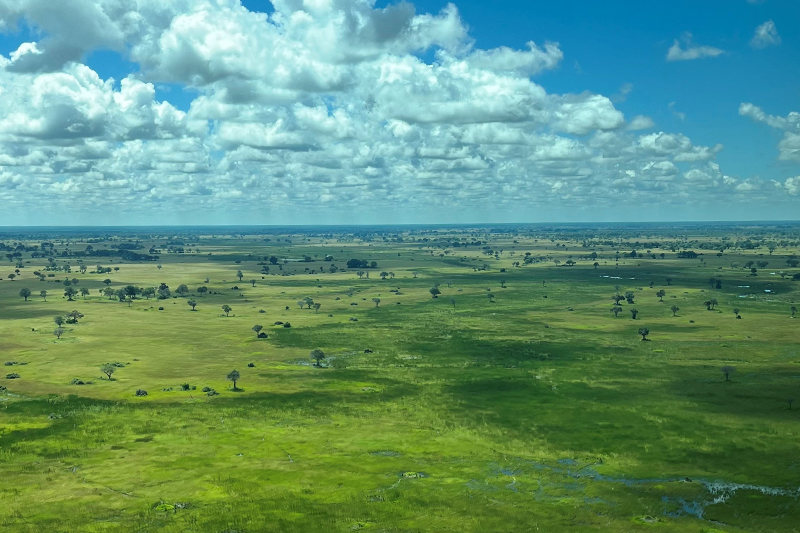
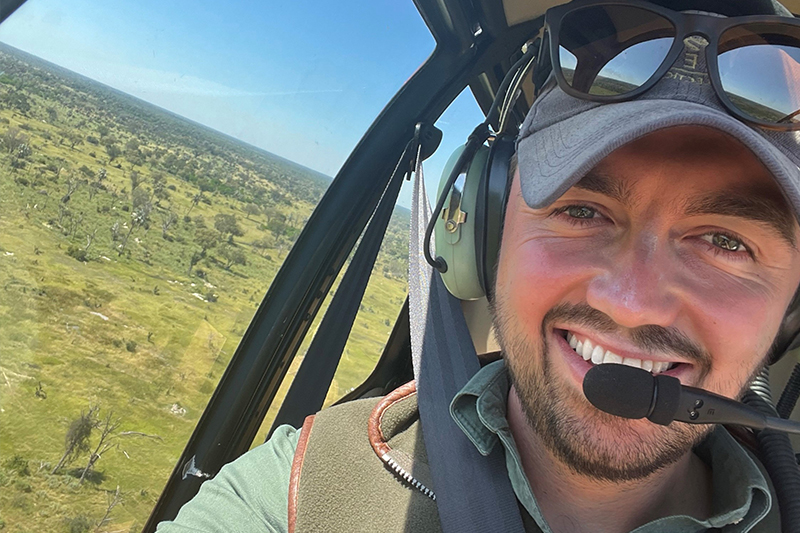
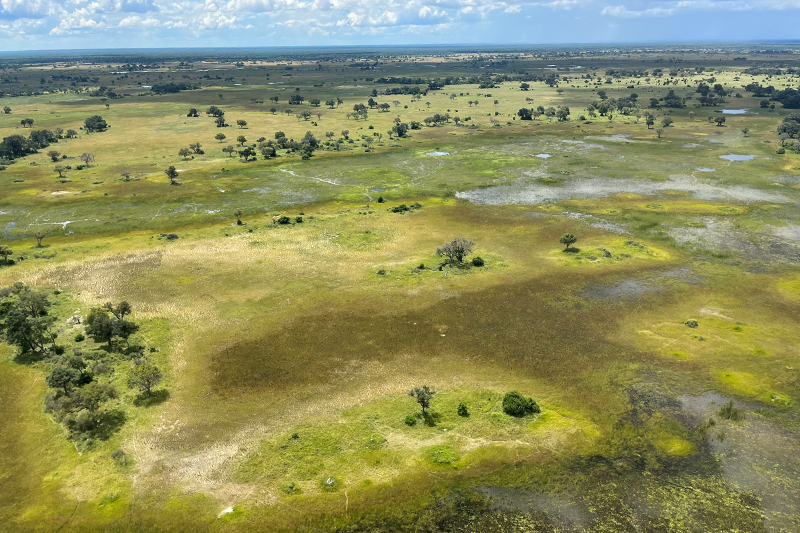
My first two nights were spent on the edge of the Linyanti marsh on the border with Namibia. The Linyanti Region is not part of the Okavango Delta but links the north-east delta to the expanses of Chobe National Park further east. It is a large, wild area offering excellent game viewing in the dry season as the lack of water elsewhere means that wildlife is forced to congregate around the marsh. Huge herds of elephant and buffalo gather as well as numerous antelope which attracts the predators and can lead to some awesome interactions. In March the game was much more spread out and deeper into the mopane woodland which made it harder work. Despite this, on one afternoon transfer from Kings Pool to Savuti Camp, we came across three separate lion prides totalling over 20 (including some tiny cubs) as well as female leopard slinking across the road. The birdlife was incredible, and I enjoyed many good sightings of golden oriole, iridescent kingfishers and many great raptors.
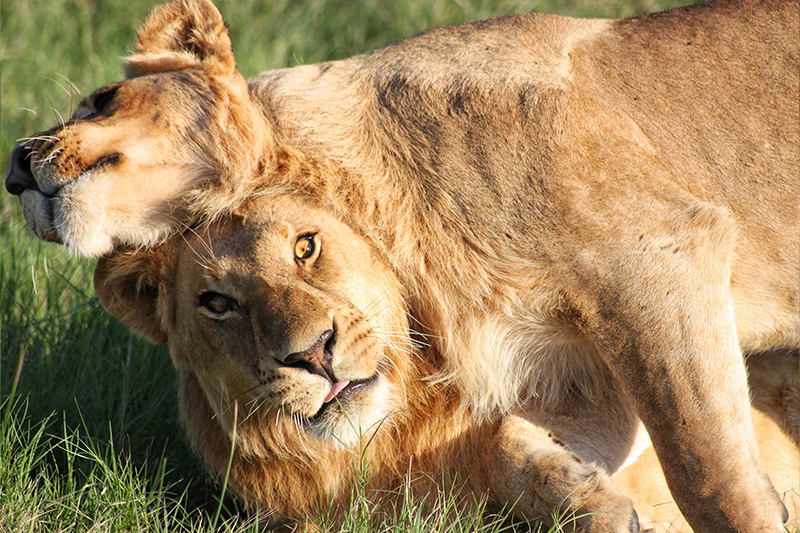
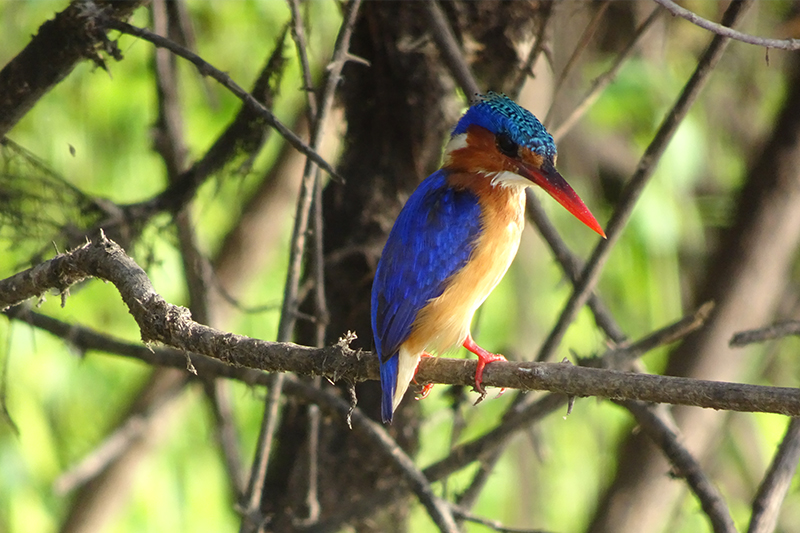
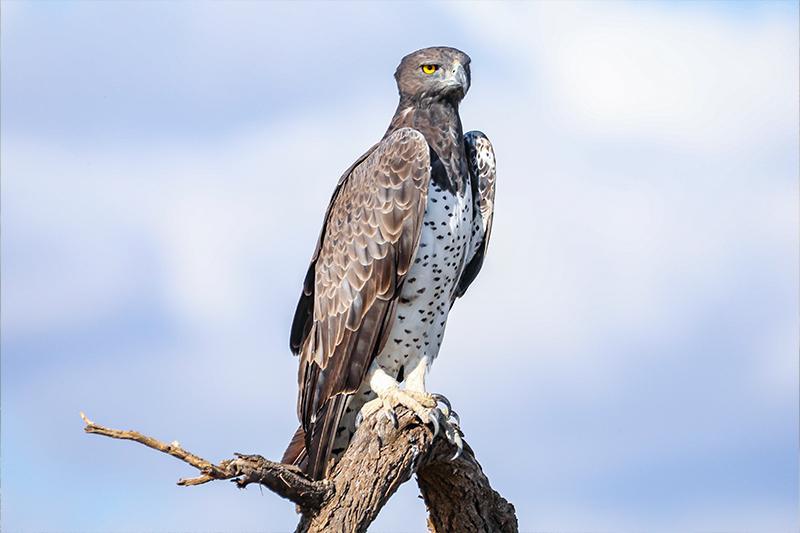
From the Linyanti I flew southwest into the southern Okavango Delta. I spent two nights combining the Chitabe and Santawani concessions which offer some of the best wildlife in the delta. Both areas are renowned for their predators, including wild dogs. On my afternoon game drive at Chitabe, we followed six lions as they patrolled their territory in search of some dinner. We followed them for around two hours, just the guide and me completely alone which is very special and a big draw of Botswana’s private concessions.
As you can imagine, visiting different camps in the Okavango Delta can be slightly more complicated than simply driving between them. Impassable roads and numerous flooded channels to navigate mean that travelling by air is best. For extra flexibility, and for the experience, one morning I took a small R44 helicopter operated by Helicopter Horizons and called in at a number of different camps in the area. Seeing the delta by helicopter was exhilarating and is definitely worthwhile either as a scenic flight camp excursion or instead of a fixed wing flight between camps. The views are magical, and you really can spot wildlife as you go. There is also something quite special about landing into a camp by helicopter, perhaps a slight James Bond fantasy moment – no martinis were ordered though!
My next stop was the Khwai region in the far east of the Delta, which is split into two different concessions. In the east, the Khwai Community Concession is a community development trust which is effectively a public game viewing area managed by the local community for which a percentage of costs per bed night go to locals to show wildlife as a resource rather than a burden. A great way to mitigate human-wildlife conflict and conserve these incredible animals. The Khwai area is stunning with swathes of Kalahari apple leaf forests, riverine woodland and open flood plains. During the dry season the game viewing takes place along the Khwai river and its tributaries with elephant herds and predator viewing in particular very good. It was harder work for me on this trip, but I still managed to see lion, elephant and good numbers of general game over a two-night stay. The birdlife along the river was awesome too. It is worth noting that because Khwai is a public area (similar to Moremi) it doesn’t offer the same exclusivity as the private concessions, with several luxury camps and camp sites for self-drivers. However, in combination with a private concession it can work really well.
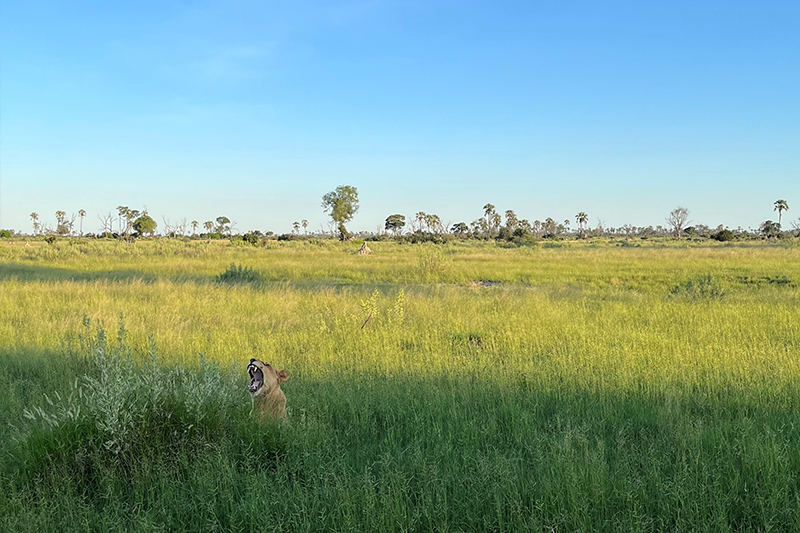
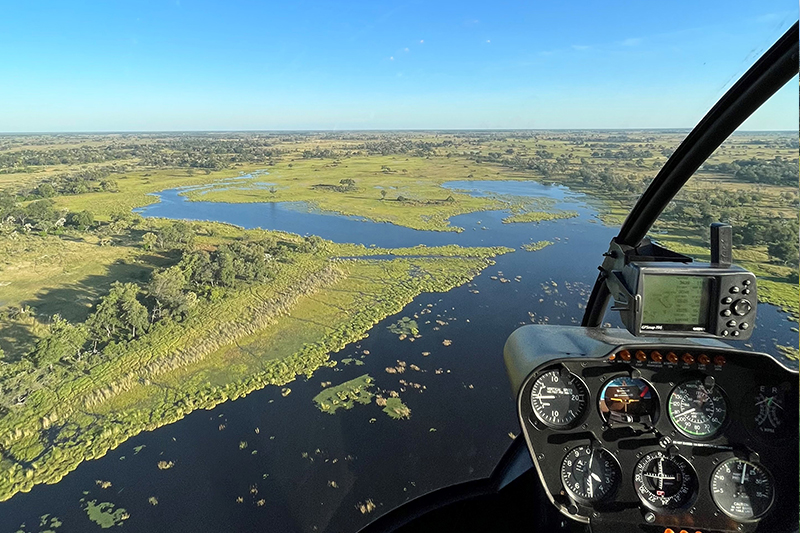
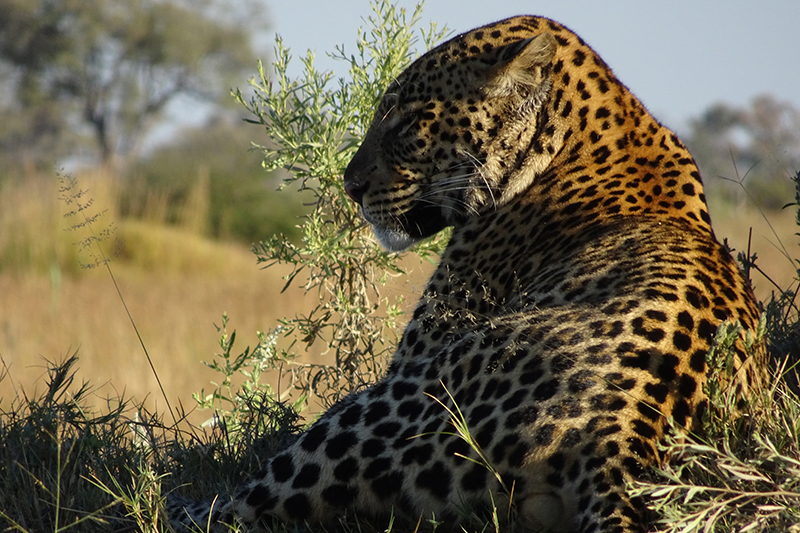
Bordering the community concession to the west is the Khwai Private Reserve, which is a traditional private concession. I spent one night in this area which was again a stunning concession. My game viewing highlights were seeing a lioness with four beautiful three-month-old cubs, and a big male leopard which we managed to follow off road. In addition to the exclusivity offered, the extra flexibility of a private concession is worth considering (ability to drive off road, undertake night drives etc).
I felt I had been very lucky with the game viewing thus far, especially as half my time had been taken up visiting camps, but my final stop in the delta turned out to be most rewarding of all. The Kwara concession is sandwiched between Khwai to the east, Moremi to the south and the Shinde concession to the west. Kwara is well known for its’ big game and predators. I have a real soft spot for African wild dogs, and I thought all hope of seeing them on this trip was lost. However, as we left Kwara on an afternoon drive a call came through the radio and after a rather hasty and bumpy ten minutes we saw a pack of fourteen dogs with very full bellies resting in the shade. We spent a good 30-40 minutes with them before leaving the pack in peace. Later we came across two cheetahs, again lazing after a big lunch. We watched the sub adult play with his mother until the sun began to set where of course a well-deserved gin and tonic was savoured. Even in the green season, Kwara delivered a truly first-class game drive!
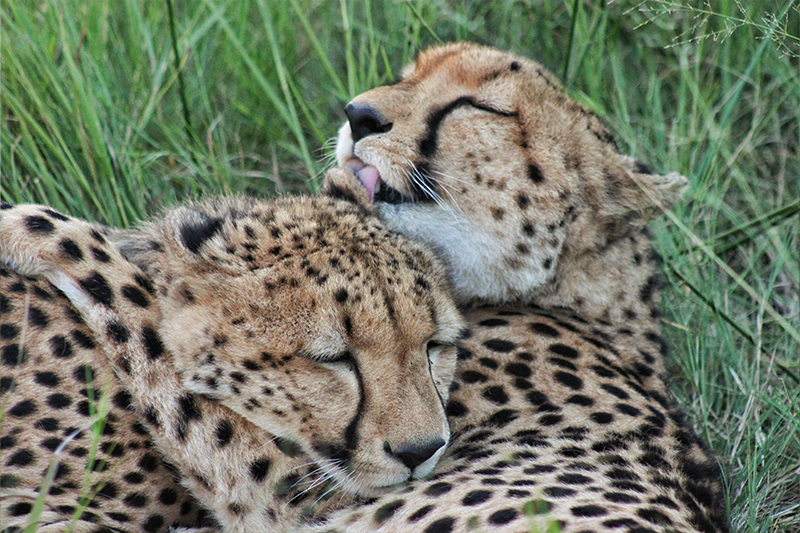
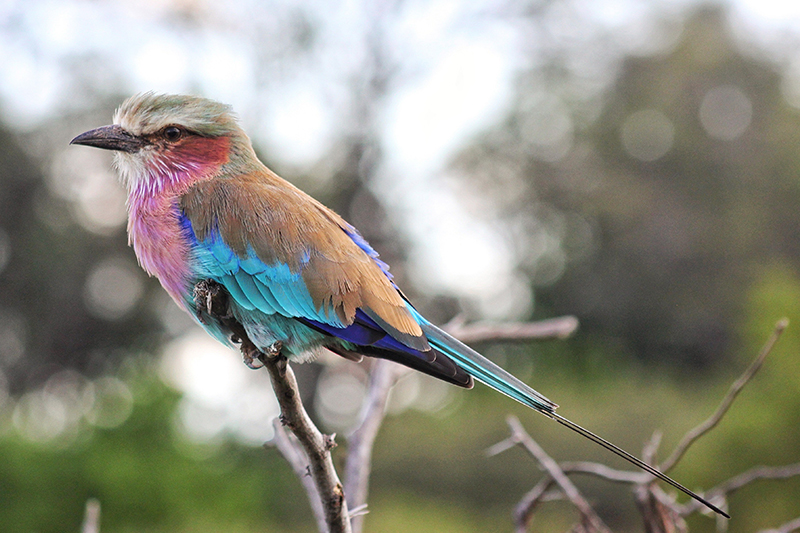
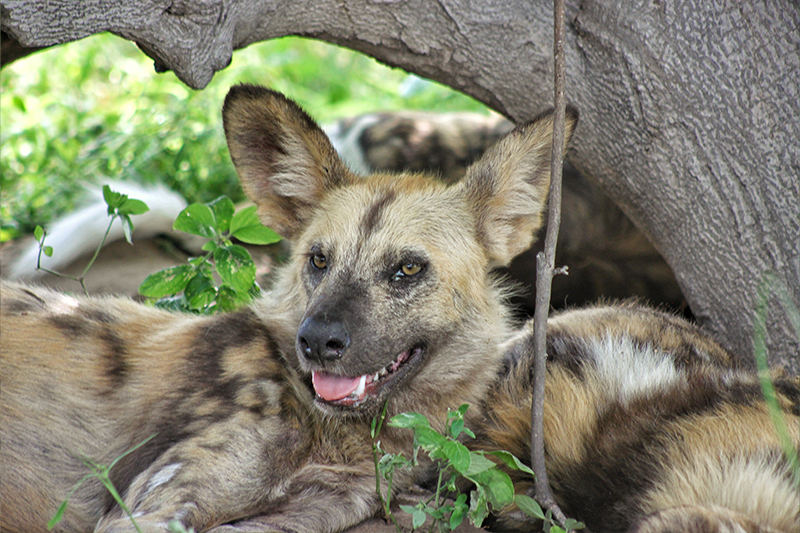
Looking back at my time in the Linyanti and Okavango, I felt the game viewing was excellent despite the seasonal challenges. When it was quiet on the big game front, the birding was rewarding, and the scenery was stunning throughout.
For my final night, I flew back to Maun and then travelled by road east towards Makgadikgadi National Park. I spent an afternoon at Meno a Kwena which has a stunning elevated location overlooking the Boteti River. The camp has a very laid-back feel and although offering game drives towards the salt pans, it doesn’t offer all out action and instead a nice mix of a ‘sofa safari’ watching the elephant come down to drink as well as a cultural aspect. As the heat of the day faded away, I walked with the fascinating San bushman who mesmerised us with their incredible language of clicks and showed us their traditional hunter gatherer ways. It isn’t a commercial touristic experience but instead an informative insight into how they have survived in the Kalahari for thousands of years. Having spoken in length to one of them afterwards they explained the importance of keeping their culture alive in an ever-changing world.
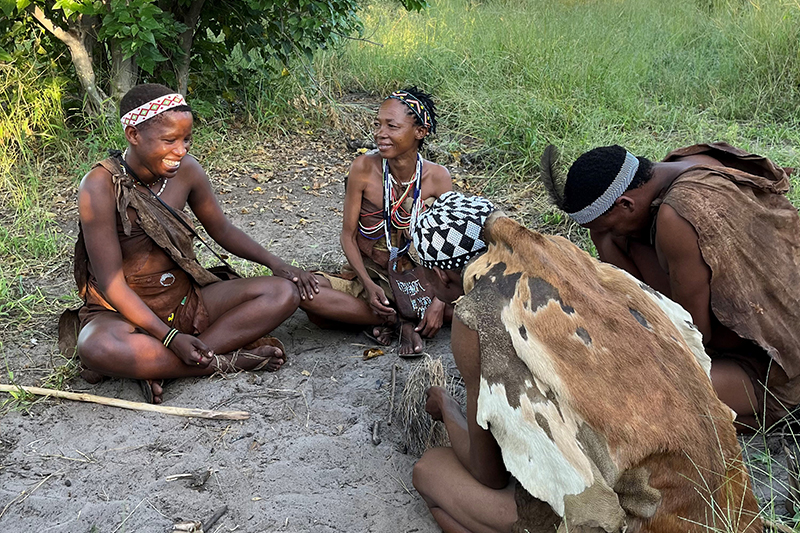
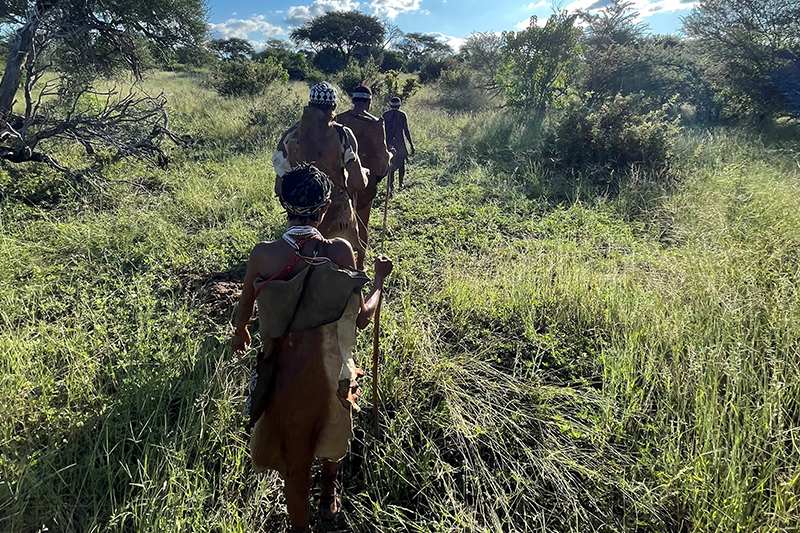
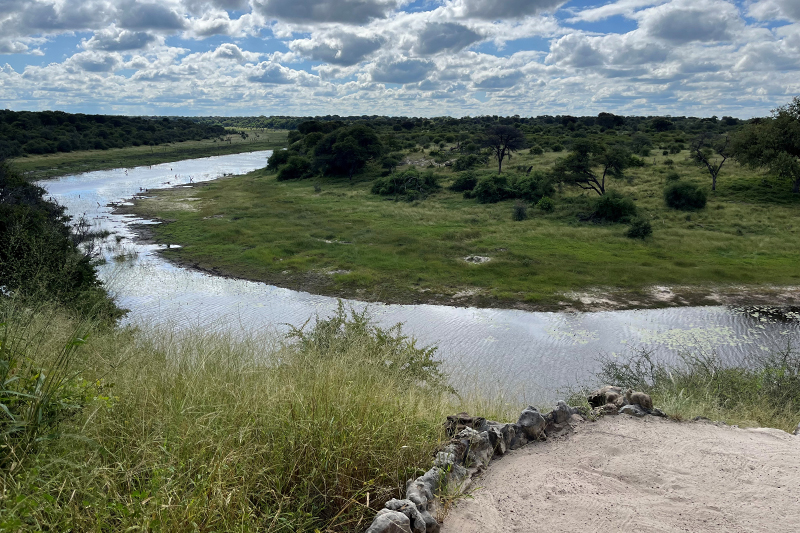
Being back in Africa was really special and nothing quite beats waking up to the munching of a hippo the other side of the canvas or the troublesome vervet monkeys using the roof of your tent as a trampoline!
During Joe’s trip he stayed at: Linyanti Bush Camp, Kings Pool, Chitabe Camp, Mma Dinare, Nokonyana, Machaba Camp, Little Sable, Kwara and Meno a Kwena.
He also visited: Linyanti Ebony, Savuti Camp, Duma Tau, Chitabe Lediba, &Beyond Sandibe, Gomoti Plains, Rra Dinare, Letaka Safaris, Little Machaba, Belmond Khwai River Lodge, Khwai Bush Camp, Khwai Leadwood, Sable Alley, Tuludi and Splash.
